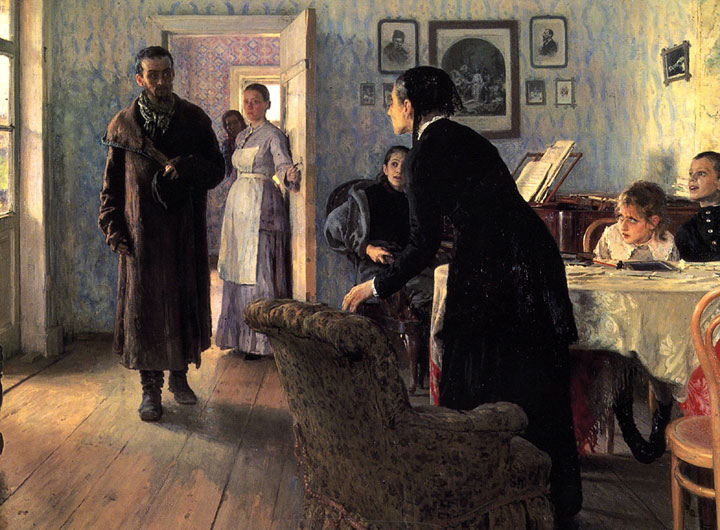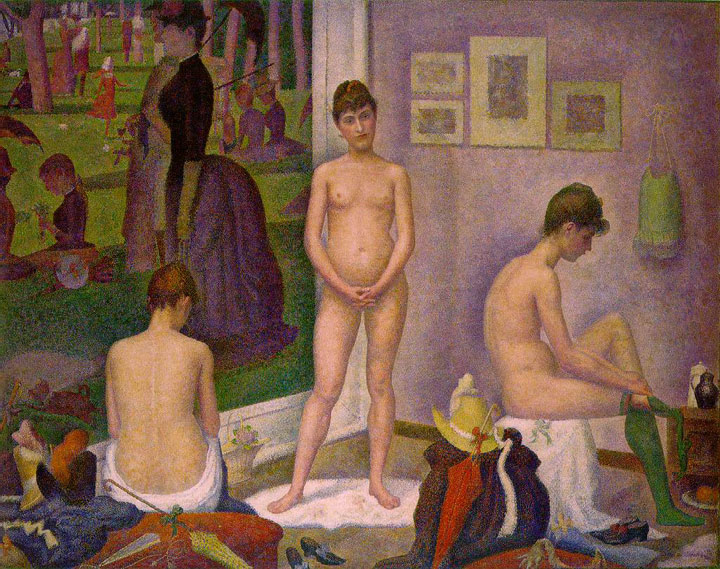This installment of Footnotes begins a series of addenda to The Drawing Center’s new program series Drafts, as tributaries of the ongoing conversation around its events and the images that precipitate them.
The images used in Drafts are found in the Reanimation Library’s archive. The purpose of both the library and the series, essentially, is to give obsolete imagery—including some from a scientific context—an afterlife through art. Likewise, artists Rick Myers and Heide Fasnacht have taken data from outdated studies that have been long forgotten and given it a new life.
An image depicting Russian psychologist Alfred L. Yarbus’s 1967 study of saccadic eye movement is part of the original selection that framed Drafts Phase I, and was also inherited by artist Erica Baum’s selection for Phase II. This same image correlates with a film by Myers and a suite of drawings by Fasnacht, which were influenced by past research on eye movement. This image in particular demonstrates an unorthodox manifestation of line drawing, as a graph tracing the trajectory of a viewer’s eye in the act of perception.

RICK MYERS
Rick Myers’s methodology approaches drawing as an investigative field with a performative element. To create his work Drawing with Removed Subject, Myers first replicated a study by Yarbus similar to the one illustrated in the 1971 Scientific American book Image, Object, and Illusion (above), found in the Reanimation Library. The original study used a suction device affixed directly to the eyes of the participants, with a mirror that reflected a path of light corresponding to their eye movements onto photosensitive paper. Myers tracked a “free examination” of a painting by Russian realist Ilya Repin—the same stimulus Yarbus had used—with a computer-based infrared system.
The scan path from the study was plotted sequentially onto an 85-by-200-foot ice rink by figure skater Brittney Rizo, who choreographed an aesthetic movement based on the sequence. Shot from an aerial vantage onto digital video and slowed down to the natural pace of the figure skater, what appears on the ice is a trace of the twenty-five second eye tracking study without the presence of the subject image. In later inquiry, Myers explains that his interest in eye movement began in his early twenties, when he came across a documentary on an institution that was tracking eye movement using a device positioned behind paintings.
Rick Myers, Drawing with Removed Subject (excerpt), 2011. HD video with sound, 9 minutes and 40 seconds.
HEIDE FASNACHT
While researching images in encyclopedias from the 1950s–60s, Heide Fasnacht came across the work of psychologist Robert Solso of MIT. He used specialized photography which made the saccades—quick, simultaneous movements of both eyes in the same direction—visible, in order to transcribe eye movements of a viewer looking across a painting. Fasnacht, like Myers, was interested in the ephemeral experience of art, and she utilized these images to “reproduce” some of the artworks that were used in Solso’s experiment in a series called R.E.M.
Among Solso’s selection (including Rembrandt’s The Anatomy Lesson of Dr. Nicolaes Tulp and Manet’s Olympia) the Seurat painting Les Poseuses, in particular, caught Fasnacht’s attention because of the pointillist style of the artwork, a type of Impressionism aiming to capture atmospheric nuances of light and color in small dabs of paint. She explained her process: “I retraced the saccades, and in many instances punched holes through the graphite drawing at the exact point of the eye’s resting points, thus rendering vision as ethereal as air.”
Ultimately, Solso’s studies were able to graphically expose individual differences in viewing artwork, and in a sense that is precisely what Fasnacht accomplished in her own work. By transforming the recorded traces of Solso’s studies, she, like Myers, maps the activity of viewing independent of the original painting. Her drawings thus invite viewers to experience it at another layer of perspectival remove.
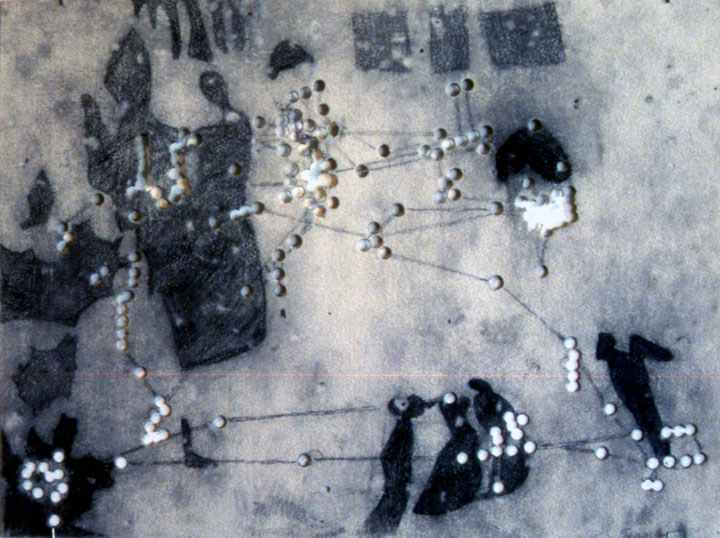
Heide Fasnacht, Drawing from REM series (based on Les Poseuses), 1996-1998. Graphite and hand punctures on paper, 22 x 30 inches. Image courtesy of the artist.
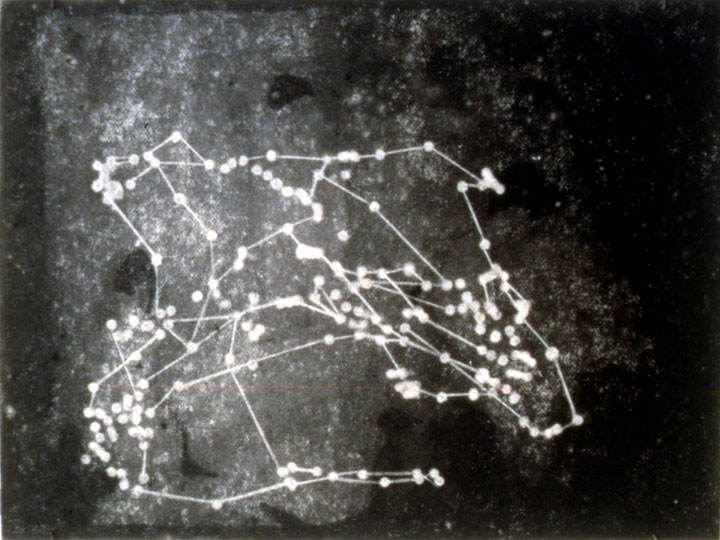
Heide Fasnacht, Drawing from REM series (based on Les Poseuses), 1996-1998. Graphite and hand punctures on paper, 22 x 30 inches. Image courtesy of the artist.
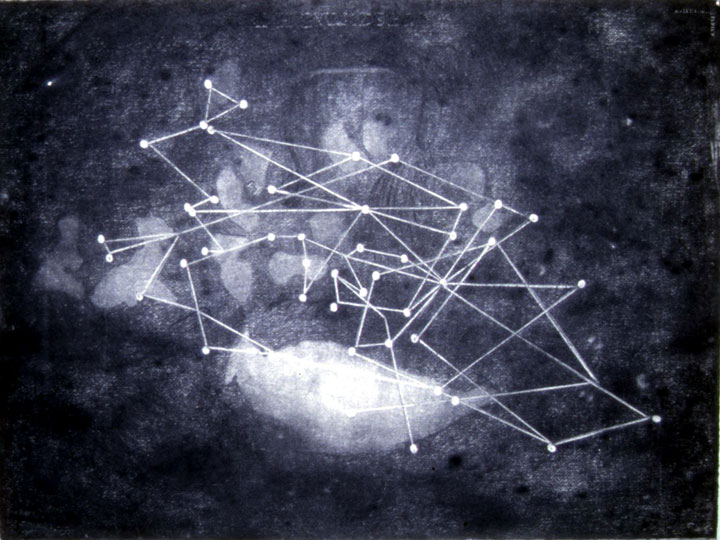
Heide Fasnacht, Drawing from REM series (based on The Anatomy Lesson), 1996-1998. Charcoal on paper, 22 x 30 inches. Image courtesy of the artist.
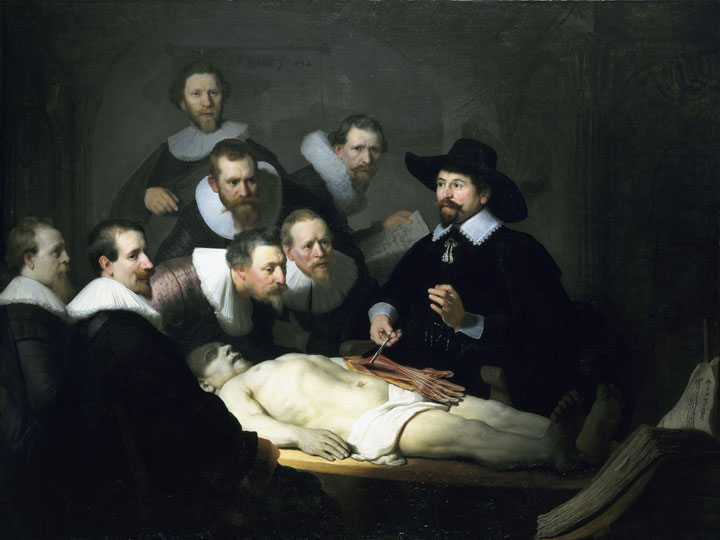
Rembrandt van Rijn, The Anatomy Lesson of Dr Nicolaes Tulp, 1632. Oil on canvas, 66 11/16 x 85 3/16 inches.
–Rebecca Dearlove, Development Intern
Drafts Phase II: It Works Like This is scheduled for March 12, 2013 at 6:30 PM. The program, based on images tracing lines of sight and connecting subjects and objects of perception, will include three performances by artists Lauren Bakst, Shonni Enelow, and Steven Zultanski.

